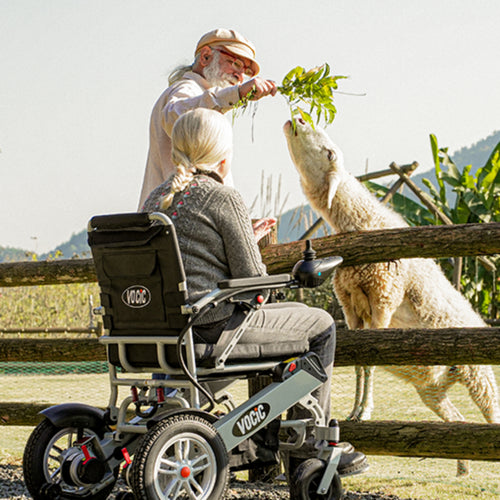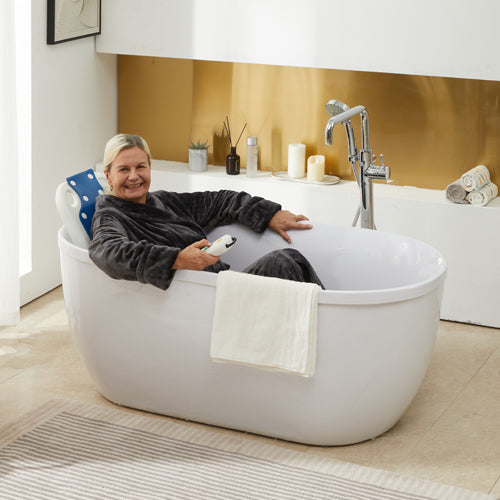If you or someone you know faces challenges with mobility, the use of mobility aids can greatly improve your life. These aids provide stability and support, allowing people to get around with more confidence and independence. But you may not know how to use them properly, so I'm going to provide you with some tips on how to use a walker safely!
Understanding the Importance of Walkers
Walkers help people who are injured, disabled, or have limited mobility due to age to walk. Walkers have sturdy and reliable frames that reduce the risk of falls and provide a sense of security while walking. Walkers also promote proper posture and gait, contributing to overall physical health.
Tip 1: Choose the Right Walker
When choosing a walker, it is important to first understand the various types of walkers and how they can meet your needs.
1. Types of Walkers and Their Uses
Standard Walkers

A standard walker is a rectangular frame made of metal with four legs. Each leg ends in a rubber tip for stability. The user lifts the frame to move forward, providing support for those needing help with balance and stability. There are no wheels, emphasizing stability over mobility, making it well-suited for those who require substantial support.
Rolling Walkers

A rolling walker, or rollator, has a similar metal frame but is equipped with wheels on at least the front two legs, sometimes on all four. This design allows the user to push the walker forward without needing to lift it, facilitating easier movement. Rolling walkers often come with additional features like seats and baskets, catering to individuals who can walk but need occasional support.
2. Factors to Consider When Choosing a Walker
Your Mobility Needs
If you have trouble walking independently, a standard walker may be the best choice. However, if you are more independent and only need a little help, a rolling walker may be better for you.
Your Living Environment
If your living space has narrow hallways or tight corners, a rolling walker with better maneuverability may be more practical. On the other hand, if stability is paramount and space is not an issue, a standard walker may be preferred.
Tip 2: Adjust Your Walker to Fit

Once you've chosen the right walker, it needs to be properly adjusted to provide optimal support and comfort, which will help with future use.
1. Finding the Perfect Height
Measure the ideal height. Stand upright with your arms at your sides. The top of the walker should line up with the crease on the inside of your wrist. This position allows you to move your arms naturally and comfortably while using the walker.
Ensuring that the walker is set at the right height allows for better balance and reduces the strain on your shoulders and back. Incorrect height adjustment can lead to poor posture and discomfort, hindering your overall mobility.
2. Adjusting the Walker for Comfort and Safety
The handle of your walker provides stability and support. You should choose an ergonomic handle that is firm and comfortable to hold. A properly cushioned handle will reduce hand fatigue during prolonged use.
Basic functions such as adjusting the height of the handle can usually be done independently, but for more complex adjustments, you may need to seek some help. A physical therapist or mobility aid vendor can ensure that your mobility aid meets your needs in every way.
Knowing these tips can help you make better use of your walker and ensure that you have a safe and comfortable experience while walking.
Tip 3: Practice Proper Walking Technique

When using a walker, it is important to have the correct walking technique to maximize the effectiveness of the walker.
1. The Basics of Walking with a Walker
Staying Upright and Stepping Into the Walker
Stand tall, keep your back straight, and avoid leaning too much on the walker. When stepping forward, make sure the walker is positioned slightly in front of you before you step. This sequence helps maintain stability and prevents sudden shifts in the center of gravity.
The Correct Pace and Step Size
Find the right pace and stride. Take smooth, measured steps and avoid hurried movements. Make sure steps are not too short or too long and that your gait is natural. Maintain a steady rhythm and stay balanced and confident while walking.
2. Turning and Navigating Corners
Safe Turning Techniques
When turning with your walker, approach the corner slowly and steadily. Pivot your body along with the walker rather than twisting at the waist, which can strain your back. Make sure to look in the direction you are turning to maintain awareness of your surroundings.
Avoiding Common Mistakes
Common mistakes when using a walker include making sharp turns or taking unsteady steps, which can lead to imbalance or tripping hazards. It's also important to avoid overextending or favoring one side of the walker too much, as this can compromise stability.
By practicing these tips regularly, you can effectively improve your mobility.
Tip 4: Safely Navigate Through Doors and Elevators
Getting through doorways and riding elevators with a walker is often difficult, but with the right techniques, you can successfully overcome these obstacles.
1. Mastering Doorways with a Walker
Techniques for Opening Doors
When approaching a closed door, position yourself in front of it with your walker securely braced. Use one hand to grasp the handle while maintaining stability with the walker. Slowly push or pull the door open, ensuring that you have a firm grip on both the walker and the door to prevent sudden movements that could affect your balance.
Going Through Doors Safely
As you move through the doorway, take small steps and ensure that your walker clears the opening without getting caught. Maintain a steady pace and avoid rushing, allowing yourself ample time to pass through comfortably. Once on the other side, gently close the door behind you if needed before continuing on your way.
2. Using Elevators Without Hassle
Entering and Exiting Elevators
Approach the elevator entrance carefully, positioning yourself near the doors while keeping a secure hold on your walker. As the doors open, wait for other passengers to exit before entering slowly and steadily. Inside the elevator, find a stable position for your walker, ensuring that it does not obstruct others or pose a tripping hazard.
Positioning Your Walker in the Elevator
Once inside, stand in a balanced position with your rolled walker, using any provided handrails for additional support if necessary. Avoid placing excessive pressure on the walker as this may cause instability during movement. When reaching your desired floor, exit calmly and methodically, maintaining control of your walker as you leave the elevator.
Conclusion
Whether it's a standard walker or a rolling walker, proper walking techniques will help you move safely and confidently with a walker.
Make sure your walker is properly adjusted to your height and comfort level to increase safety and usability. Choose the right walker based on your mobility needs and living situation.
As you embark on this journey with a walker, remember that practice makes perfect. Embrace the learning process, be patient with yourself, and ask for help when you need it.
Using a walker is a positive step toward regaining your independence and mobility, so spend each day with confidence. By remembering these valuable tips, you can get the most out of your walker experience.
If you want to buy a perfect walking aid, you can check on the VOCIC website. They provide a variety of walking aids. You can also check out our article the 10 best walkers of 2024. I believe you can find the most suitable walking aid.







